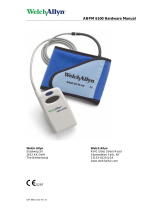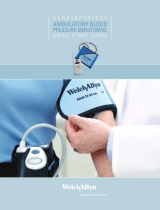Port settings:
Every time you plug in the cable that connects the ABPM into the computer, Windows creates a so-called virtual COM port and gives
this port a number. CPWS has been programmed with this number during the installation.
If the cable is removed from the computer and plugged in again, perhaps into a different USB port, Windows may hand out a different
number to the virtual COM port. However, the settings in CPWS will not automatically change accordingly.
Take the following steps to find out if this is causing the issue and how to correct it
1. First we need to find out if the port is available in Windows and what the assigned port number is:
In Windows, click the start button and type “Device manager” and hit enter or click on “device
manager” in the list that appears
The Device manager window will open
In the list of devices that appears, look for an entry named “Ports (COM & LPT)” and click on the
little arrow left of it to expand this entry (double clicking on the item itself also works)
You should now see at least one entry that has one of the following names (depending on your
ABPM version and interface cable type):
o “Prolific USB-to-Serial Comm Port (COMx)”
o “USB Serial Port (COMx)”
o “Keyspan USB Serial Port (COMx)”
The x represents the port number that Windows has assigned to the virtual port.
If none of these entries are shown under Ports, you may find an “Unknown device” under the section
“Universal Serial Bus Controllers”. In that case there may be a problem with the driver that is needed for
this interface cable, see section ABPM Driver for instructions to (re)install the driver.
2. The port number (the number that is shown after “COM”) must now be entered into the CPWS settings (windows Administrator privileges required):
Open CPWS and go to: <File><Settings><Ambulatory Bloodpressure><Advanced>
You can now verify or correct the selection under “Connected to:” for the appropriate device
Then click OK to close the settings window and retry communication














